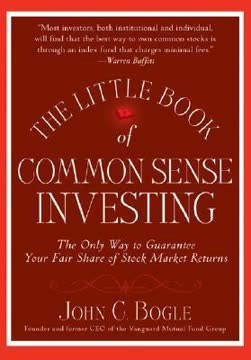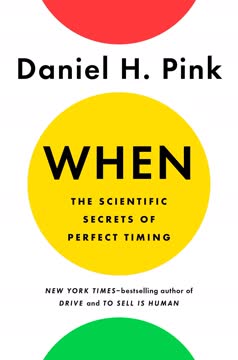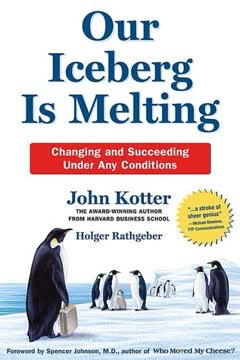Key Takeaways
1. See-Feel-Change: The Heart of Successful Transformation
People change what they do less because they are given analysis that shifts their thinking than because they are shown a truth that influences their feelings.
Emotional connection drives change. The core of successful large-scale change is not strategy, systems, or culture, but changing people's behavior. This behavior change happens most effectively when people's feelings are influenced, not just their thoughts. The see-feel-change pattern is more powerful than analysis-think-change.
Visual and visceral experiences catalyze transformation. Successful change leaders find creative ways to show people the need for change through compelling, eye-catching situations. These experiences evoke emotional responses that facilitate useful change or ease feelings that are getting in the way. Examples include:
- Piling 424 different types of work gloves on a boardroom table to demonstrate purchasing inefficiencies
- Creating a video of an angry customer to highlight service problems
- Redesigning office space to foster collaboration between departments
2. Increase Urgency: Spark the Initial Motivation for Change
You can't manufacture urgency where none exists, but you can remove the blinders that prevent people from seeing the imminent hazards.
Create a compelling case for change. The first step in any successful change effort is to create a sense of urgency among relevant people. This urgency is not just intellectual understanding but an emotional commitment to action. Methods to increase urgency include:
- Showing concrete evidence of problems or opportunities
- Bringing in outside perspectives, such as customer feedback
- Creating experiences that confront people with organizational shortcomings
- Using symbolic actions to highlight the need for change
Avoid complacency and false urgency. Beware of complacency driven by past success or lack of visible crisis. Also, avoid creating anxiety-driven false urgency that leads to frenetic activity without productive results. The goal is to create genuine urgency focused on critical business challenges and exciting opportunities.
3. Build the Guiding Team: Assemble a Powerful Group to Lead Change
A strong guiding coalition is always needed—one with the right composition, level of trust, and shared objective.
Assemble a diverse and influential team. Successful large-scale change requires a powerful guiding coalition with the right mix of skills, credibility, and leadership capacity. This team should:
- Include members from different parts of the organization
- Have sufficient power and influence to lead the change effort
- Work together effectively as a team with high levels of trust
Build trust and teamwork. Creating a cohesive guiding team often requires:
- Carefully selecting team members based on expertise and chemistry
- Engaging in team-building activities to develop trust and shared commitment
- Structuring team interactions to foster open communication and collaboration
4. Create a Compelling Vision: Develop Clear and Inspiring Direction
A good vision serves three important purposes: It clarifies the general direction for change, it motivates people to take action in the right direction, and it helps coordinate the actions of different people.
Craft a clear and motivating picture of the future. An effective vision:
- Is imaginable: Conveys a clear picture of what the future will look like
- Is desirable: Appeals to the long-term interests of stakeholders
- Is feasible: Comprises realistic, attainable goals
- Is focused: Is clear enough to provide guidance in decision making
- Is flexible: Is general enough to allow individual initiative and alternative responses
- Is communicable: Is easy to explain quickly and succinctly
Develop supporting strategies. Along with the vision, develop strategies for achieving that vision. These strategies should be bold enough to make the vision a reality while remaining grounded in the organization's capabilities and market realities.
5. Communicate for Buy-In: Effectively Share the Vision and Strategy
Without credible communication, and a lot of it, the hearts and minds of the troops are never captured.
Communicate consistently and repeatedly. Effective vision communication:
- Is simple and jargon-free
- Uses metaphors, analogies, and examples
- Uses multiple forums (meetings, memos, newsletters, informal interaction)
- Is repeated frequently
- Is led by example from the guiding coalition
- Explains seeming inconsistencies
- Uses two-way communication
Address emotional barriers. Successful communication goes beyond information transfer to address people's anxieties, concerns, and aspirations. This might involve:
- Using stories and analogies to make the vision relatable
- Providing opportunities for dialogue and questions
- Demonstrating how the vision connects to people's values and goals
6. Empower Action: Remove Barriers and Enable People to Act
By removing barriers to implementation, leaders provide the freedom necessary for employees to work across boundaries and create real impact.
Identify and remove obstacles. Common barriers to empowered action include:
- Structures: Reorganize to align with the vision
- Skills: Provide training for new skills and attitudes
- Systems: Align information and personnel systems to the vision
- Supervisors: Confront managers who undercut needed change
Encourage risk-taking and nontraditional ideas. Create a culture that supports innovation and experimentation. This might involve:
- Encouraging and rewarding new ideas
- Providing resources for pilots and experiments
- Celebrating both successes and productive failures
7. Generate Short-Term Wins: Create Visible Successes to Build Momentum
Without short-term wins, too many people give up or actively join the ranks of those people who have been resisting change.
Plan for and create visible improvements. Effective short-term wins are:
- Visible: People can see for themselves whether the result is real or just hype
- Unambiguous: There can be little argument over the call
- Clearly related to the change effort
Use wins to build momentum. Short-term wins serve multiple purposes:
- Provide evidence that sacrifices are worth it
- Reward change agents with a pat on the back
- Help fine-tune vision and strategies
- Undermine cynics and self-serving resisters
- Keep bosses on board
- Build momentum
8. Don't Let Up: Sustain Acceleration and Drive Ongoing Change
Until changed practices attain a new equilibrium and have been driven into the culture, they can be very fragile.
Maintain urgency and drive deeper change. After initial successes, it's crucial to:
- Use increased credibility to change systems, structures, and policies that don't fit the vision
- Hire, promote, and develop employees who can implement the vision
- Reinvigorate the process with new projects, themes, and change agents
Tackle bigger problems. As the change effort progresses, take on larger, more deeply rooted issues that were too challenging to address earlier. This might involve:
- Changing longstanding organizational structures
- Addressing entrenched cultural norms
- Tackling complex interdepartmental challenges
9. Make Change Stick: Anchor New Approaches in the Culture
Culture changes only after you have successfully altered people's actions, after the new behavior produces some group benefit for a period of time, and after people see the connection between the new actions and the performance improvement.
Connect new behaviors to organizational success. To make change last:
- Articulate the connections between new behaviors and organizational success
- Develop means to ensure leadership development and succession
- Create new employee orientation processes that reinforce the new culture
Institutionalize the changes. Embed the new approaches in the organization's systems and processes, including:
- Performance management and reward systems
- Hiring and promotion criteria
- Onboarding and training programs
- Organizational structures and reporting relationships
By following these key takeaways, leaders can guide their organizations through successful large-scale transformations, creating lasting change that positions them for success in a rapidly evolving business landscape.
Last updated:
FAQ
What's "The Heart of Change" about?
- Focus on Change Stories: "The Heart of Change" by John P. Kotter and Dan S. Cohen is centered around real-life stories of how people successfully change their organizations.
- Eight-Step Process: The book outlines an eight-step process for leading change, emphasizing the importance of addressing emotions to drive transformation.
- See-Feel-Change Approach: It highlights the distinction between the traditional analysis-think-change approach and the more effective see-feel-change method.
- Practical Examples: Through various case studies, the book provides practical examples of how organizations can implement change effectively.
Why should I read "The Heart of Change"?
- Real-Life Insights: The book offers insights from over 200 interviews across 90 organizations, providing a wealth of real-world examples.
- Emotional Engagement: It emphasizes the importance of engaging emotions to facilitate change, a perspective often overlooked in traditional change management.
- Actionable Steps: The eight-step process is actionable and can be applied to various organizational contexts, making it a practical guide for leaders.
- Broad Applicability: Whether you're a CEO or a team leader, the principles in the book are applicable across different levels and types of organizations.
What are the key takeaways of "The Heart of Change"?
- Urgency is Crucial: Creating a sense of urgency is the first step in driving change, as it motivates people to act.
- Guiding Teams Matter: Building a strong guiding team with the right mix of skills and trust is essential for successful change.
- Vision and Strategy: Developing a clear and compelling vision, along with bold strategies, is necessary to guide the change process.
- Short-Term Wins: Achieving visible and meaningful short-term wins helps build momentum and support for the change effort.
What is the eight-step process for leading change in "The Heart of Change"?
- Increase Urgency: Create a sense of urgency to motivate people to act.
- Build the Guiding Team: Assemble a team with the right skills and trust to lead the change.
- Get the Vision Right: Develop a clear and compelling vision and strategy.
- Communicate for Buy-In: Communicate the vision effectively to gain understanding and buy-in.
- Empower Action: Remove barriers to enable people to act on the vision.
- Create Short-Term Wins: Generate visible and meaningful short-term successes.
- Don’t Let Up: Maintain momentum and continue pushing for change.
- Make Change Stick: Embed the changes into the organizational culture to ensure they last.
How does the "see-feel-change" approach differ from "analysis-think-change"?
- Emotional Engagement: The see-feel-change approach focuses on engaging emotions to drive change, rather than relying solely on analysis and logic.
- Concrete Visualization: It involves showing people tangible examples of problems or solutions to evoke emotional responses.
- Behavioral Change: By influencing emotions, this approach leads to changes in behavior that support the change effort.
- Contrast with Traditional Methods: Traditional methods often focus on data and analysis, which may not effectively motivate people to change.
What are some of the best quotes from "The Heart of Change" and what do they mean?
- "Example is not the main thing influencing others. It is the only thing." This quote emphasizes the power of modeling behavior to influence change.
- "People change what they do less because they are given analysis that shifts their thinking than because they are shown a truth that influences their feelings." It highlights the importance of emotional engagement in driving change.
- "The heart of change is in the emotions." This underscores the book's central theme that emotions are key to successful change efforts.
- "We need more leaps into the future." This encourages organizations to embrace bold changes rather than incremental improvements.
How can organizations effectively communicate a change vision according to "The Heart of Change"?
- Simple and Heartfelt Messages: Keep communication simple and heartfelt to resonate with people emotionally.
- Address Emotions: Speak to anxieties, confusion, anger, and distrust to address emotional barriers to change.
- Clear Channels: Clear communication channels of unnecessary information to ensure important messages are heard.
- Use of Technology: Leverage new technologies like intranets and video to help people visualize the vision.
What role do short-term wins play in the change process in "The Heart of Change"?
- Build Momentum: Short-term wins help build momentum for the change effort by providing visible successes.
- Emotional Boost: They provide an emotional boost to those working hard on the change, reinforcing their efforts.
- Defuse Cynics: Wins help defuse cynics and skeptics by demonstrating that the change is working.
- Feedback Mechanism: They offer feedback on the validity of the vision and strategies, allowing for adjustments if needed.
How does "The Heart of Change" suggest dealing with disempowering bosses?
- Confront the Issue: Begin by confronting the issue and explaining the situation to the individual creating the problem.
- Creative Solutions: If explaining fails, try creative solutions like reassigning the person to a role that helps them see the need for change.
- Retooling Approach: Use a retooling approach to help the individual understand the change from a different perspective.
- Avoid Ignoring or Firing: Avoid simply ignoring the problem or resorting to firing, as these are not always effective solutions.
What strategies does "The Heart of Change" recommend for embedding change into organizational culture?
- New Employee Orientation: Use orientation programs to show new hires what the organization values and how it operates.
- Promotions Process: Promote individuals who exemplify the new culture to reinforce desired behaviors.
- Vivid Storytelling: Tell vivid stories that illustrate the new way of operating and why it succeeds.
- Continuity of Behavior: Ensure continuity of behavior and results to help the new culture take root.
How does "The Heart of Change" address the challenge of maintaining urgency throughout the change process?
- External Comparisons: Use external comparisons to keep urgency high, even when internal performance is strong.
- Avoid Complacency: Recognize the tendency for urgency to sag after initial successes and actively work to counter it.
- Continuous Communication: Continuously communicate the need for change and the vision to maintain focus and energy.
- Leverage New Situations: Use new situations and opportunities to launch additional waves of change and keep momentum going.
What is the significance of the "gloves on the boardroom table" story in "The Heart of Change"?
- Visual Impact: The story illustrates the power of using a visual, tangible example to create urgency and drive change.
- Concrete Evidence: It shows how concrete evidence can cut through complacency and motivate people to act.
- Emotional Engagement: The dramatic presentation engages emotions, making the need for change undeniable.
- Catalyst for Action: The story serves as a catalyst for action, demonstrating how a simple yet powerful demonstration can initiate a change effort.
Review Summary
The Heart of Change receives mostly positive reviews, with readers praising its practical approach to organizational change management. Many appreciate the real-life examples and stories that illustrate Kotter's eight-step framework. The book's emphasis on appealing to emotions and creating a sense of urgency is noted as a key strength. Some readers find it repetitive or outdated, but overall, it's considered a valuable resource for managers and leaders seeking to implement successful change initiatives in their organizations.
Similar Books







Download PDF
Download EPUB
.epub digital book format is ideal for reading ebooks on phones, tablets, and e-readers.










